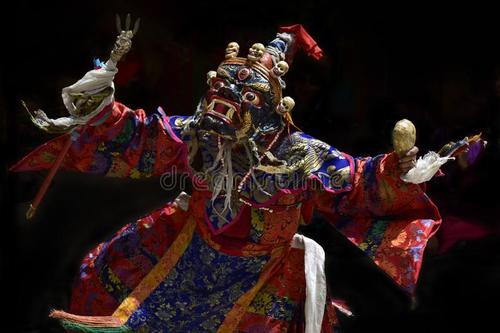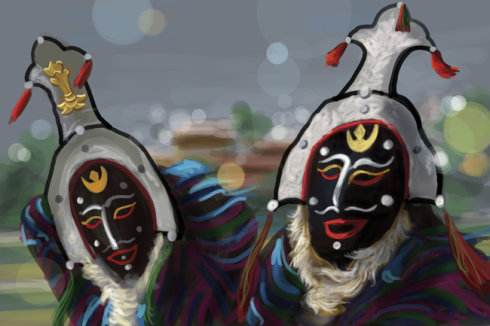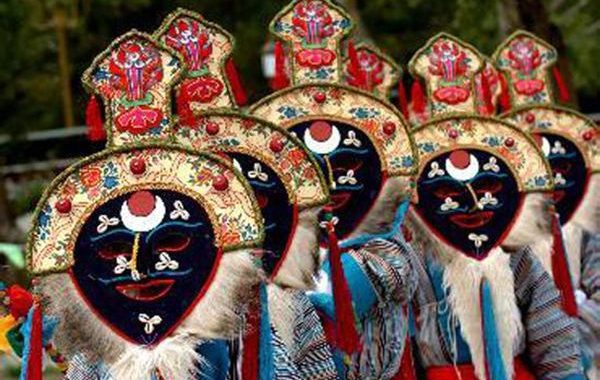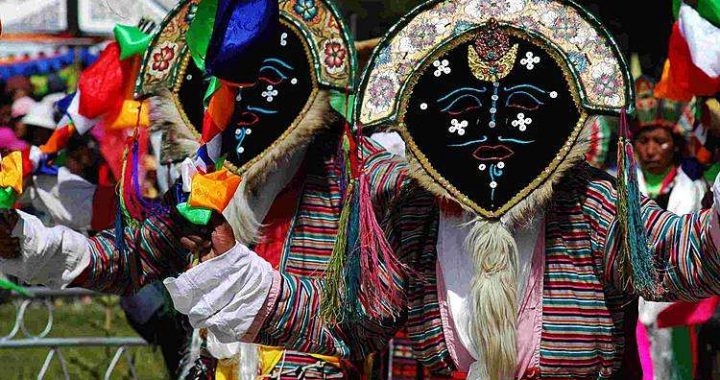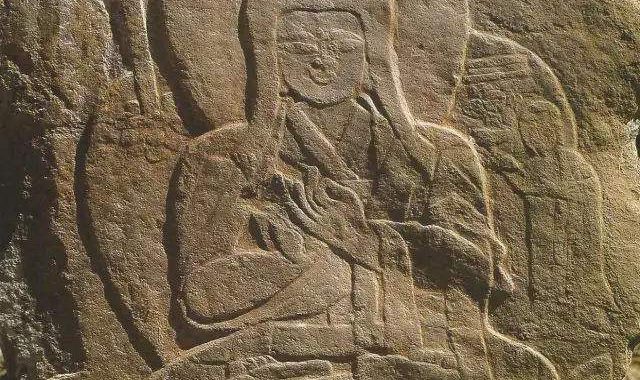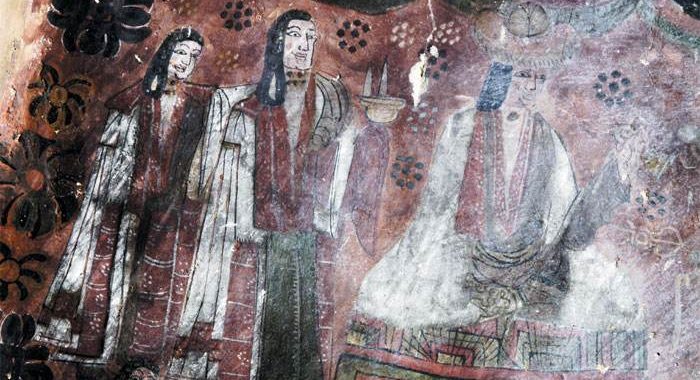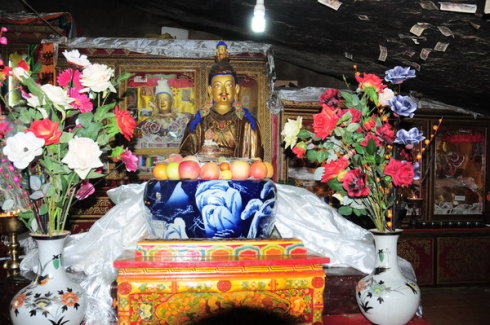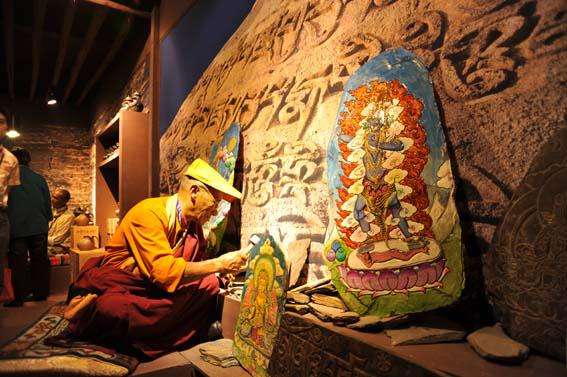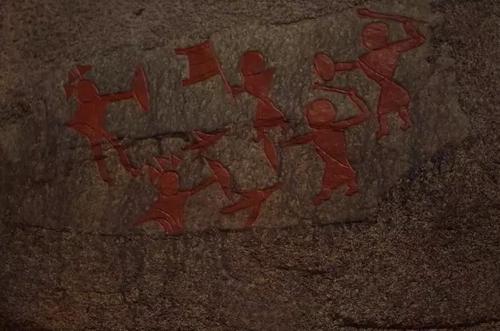Langma Classical Dance, from the Court to Society
5 min readIn Tibet, singing and dancing are the inseparable part in life. Even a grey-haired old lady who can’ t move freely, with no teeth and a wrinkled face will immediately become young as soon as she starts to sing and dance. She will dance so freely and happily as if a young lady again.
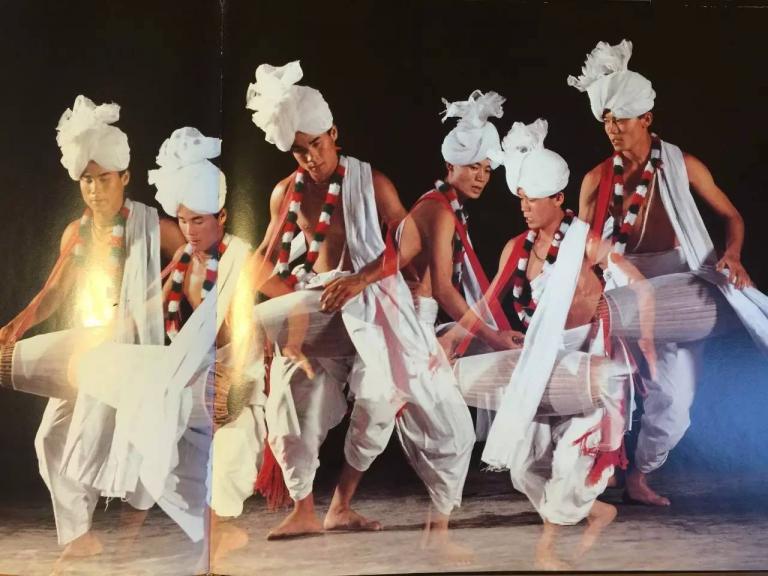
Tibetan people will dance and sing songs when carrying out traditional manual labor. Usually, first time visitors are amazed by the scene of manual labor being combined harmoniously with singing and dancing. Agricultural people in Tibet sing different songs wh hen they cultivate the land and sow seeds Cultivating the lands and hoeing up grass are done amid humorous and excellent songs and dances. All processes in the harvesting and threshing of grains, such as reaping wheat, delivering, threshing, winnowing and using a fail, are done to the accompaniment of cheerful songs and intricate dance steps.
In the pastoral areas, people sing melodious folk songs and madrigals. They sing milking songs when they milk the cows. They sing shearing songs when they shear sheep. They sing rubbing songs when they are rubbing the grain. Even the golden butter is made to a rhythmic accompaniment of songs. Moreover, there are different songs for forging iron, boating and manufacturing oil. There are loud and energetic labor songs as the background music when people deliver wood and huge stone .
For houses in the plateau, walls are made of rammed earth and the ground is paved with Aga soil. At the end of each Spring in the past, every Hat-roofec fort-style house in Lhasa was supposed to be paved with Aga soil and ramme y stones to prevent leakage during the rainy season. At that time, there were dozens of teams ramming Aga soil and hundreds of men and women working and singing on the roof every day. With these cheerful songs and orderly dances, the unique blue sky and white clouds above the plateau, and the golden domes of the Potala Palace and the Jokhang Monastery, Lhasa is like a huge stage in the sky filled with music.
In Tibet, various songs and dances are performed on different occasions For major celebrations and the Tibetan New Year in the past, a court dance called”Gaer”was performed in the potala Palace. For all kinds of major festivals in places like Xigaze, Gyantse, Lhaze and Tingri, men and women perform large scale songs and dances performance called”Xieqin. There are wedding songsand toasting songs. Moreover, love songs are sung by young people anytime when they are dating. Lamas chant scriptures with a resonating tone, while nunschant scriptures melodiously and elegantly, which is actually a kind of singing There are countless Lama Bands in many monasteries in Tibet. They play many pieces of religious music according to religious musical notation, for example, playing suona horn, copper instrument, bone instrument and conch horn, and beating mass drums, snare drums and gongs. It sometimes sounds like waves beating against the riverbank and eagles stretching their wings. This is a unique symphony of the plateau.
There are different songs and dances in different places too numerous to count. The most representative in eastern Tibet are the Xianzi dance in Batang and Gozhuang dance in Chamdo. Gozhuang dance is enthusiastic and powerful while Xianzi dance is gentle and elegant, fully representing the doughty and gentle features of Khampa people. In Sanjiang valley, there is a dance name “Reba” demanding much technique. Performers are trained under the strict supervision of their parents or teachers. Men play bells and women beat drums while jumping and looping in a dazzling display. Those performers are often known as the”Reba People with Wings .

Shepherds in northern Tibet perform a kind of Gozhuang dance called Zhuoxie”. Farmers in southern Tibet perform a circle dance around a bonfire called”Guoxie”at festivals. Fuelled by bowls of wine, they can dance days and nights. Mountaineers in Nyingchi perform””and women in Ngari perform Xian. It is said that”Xian Dance”originated in the Tubo Tsampo Period.
The upstream region of the Yarlung Zangbo River is called”D geographically. The dance named”Duixie”performed by local people for self-entertainment has refreshing tunes and enthusiastic songs as the background music. “Duixie” spread to Lhasa and soon became very popular. The gentle Duixie and Langma are favored by people from all walks of life in Lhasa. People dancing Duixie and singing Langma are seen everywhere in the streets at New Year and in the forest gardens on festivals. They sing and dance until midnight.
Now, with social development and the wide availability of rich cultural entertainments, traditional Tibetan folk songs and dances face various challenges For example, machines have replaced manual working. Songs and dances for working that were favored by people before now seem outdated. Moreover today’s youth prefer watching TV and movies and going to nightclubs. They seldom circle the bonfire and dance at night bathed by the wind and moonlight Fortunately, the traditional cultures of this nationality have been protected and promoted. They are performed on stage, made into films, or become a part of the increasingly prosperous tourism industry.
Now, there are many Langma dance halls in Lhasa. Many young people like to go there. Langma was originally a dance within the imperial court with various suggested origins. One story is that, in the time of the 5th Dalai Lama Sangye Gyatso(1653-1705) often invited some powerful friends to dance and compose poems in the interior minister hall. Therefore, they called this elegant dance and music Langma”. The second statement is that Langma was created by the 6 Dalai Lama, Tsangyang Xyitso, because the love songs were written by him. Another statement is that in the time of the 13 Dalai Lama, DainzinBanjo, a Tibetan officer introduced Yangqin from the hinterland and created Langma in Tibet. This helps explain why the interlude tones of Kunqu and Beijing Opera appear in Langma music from time to time. Becoming prevalent in Lhasa, and later spread to Xigaze City and other counties, Langma is a song based performance combined with dances. The most popular lyrics are”I didn’ tcherish my lover when I was with her. It is too late now to regret it”, which is a poem of philosophical meaning. Performing Langma requires musical instruments as accompaniment. generally, this is composed of seven musicalinstruments, fute, guitar, Yangqin, Jinghu, Te instrument, Genka and Rings.
I feel that changes and many modern elements appear in Langma dance halls in Lhasa. First, it is the singing and dancing. Second, people sing while playing musical instruments. Third, the melodious and elegant feature in Langma dance halls is completely replaced by enthusiastic rhythm and high-pitched sound, which seems more suited to the tastes of young people.

